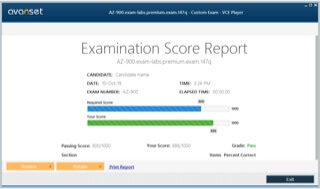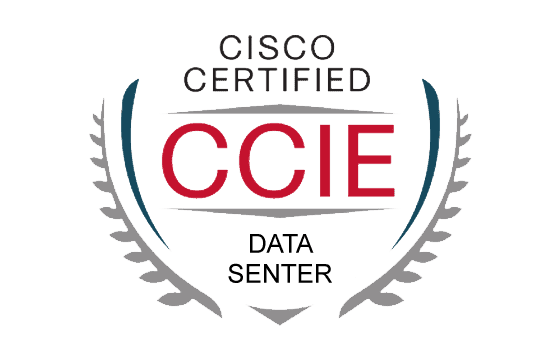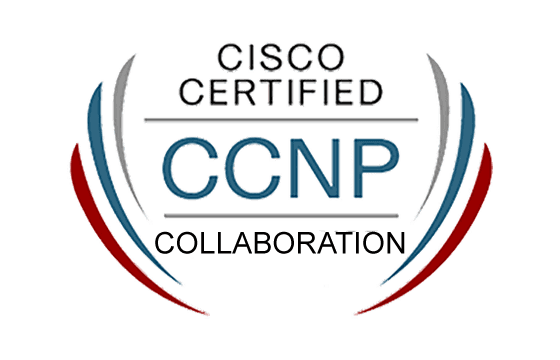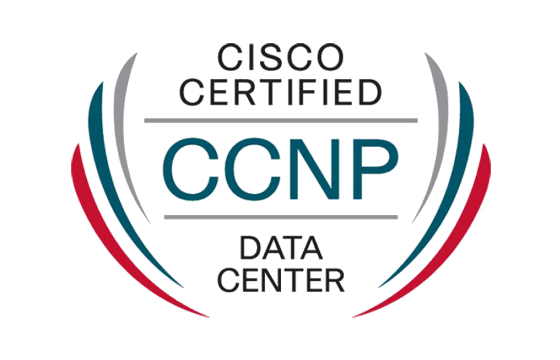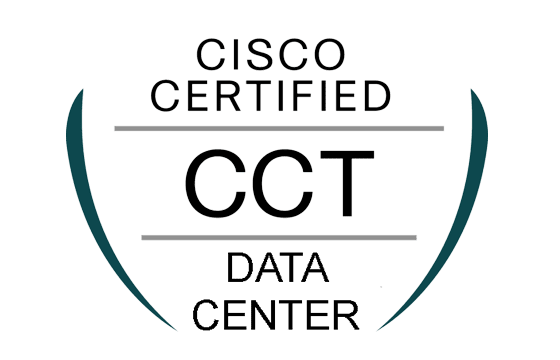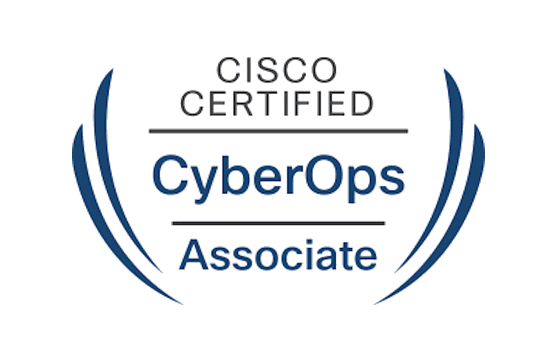Pass Your Cisco 642-901 Exam Easy!
Cisco 642-901 Exam Questions & Answers, Accurate & Verified By IT Experts
Instant Download, Free Fast Updates, 99.6% Pass Rate
This exam was replaced by Cisco with 642-902 exam
Archived VCE files
| File | Votes | Size | Date |
|---|---|---|---|
File Cisco.PassGuide.642-901.v2010-06-16.by.Mohammed.329q.vce |
Votes 1 |
Size 16.16 MB |
Date Jun 20, 2010 |
File Cisco.PassGuide.642-901.v2010-04-18.by.Saravana.329q.vce |
Votes 1 |
Size 16.16 MB |
Date May 10, 2010 |
File Cisco.PassGuide.642-901.v3.36.by.lmabx.292q.vce |
Votes 1 |
Size 15.56 MB |
Date Mar 08, 2010 |
File Cisco.SelfTestEngine.642-901.v2010-02-16.by.Stephen.276q.vce |
Votes 1 |
Size 13.8 MB |
Date Feb 16, 2010 |
File Cisco.PassGuide.642-901.v31.0.by.Simon.209q.vce |
Votes 1 |
Size 13.28 MB |
Date Dec 24, 2009 |
File Cisco.Testinside.642-901.v7.12.170q.vce |
Votes 1 |
Size 6.99 MB |
Date Aug 13, 2009 |
Cisco 642-901 Practice Test Questions, Exam Dumps
Cisco 642-901 (Building Scaleable Cisco Internetworks (BSCI)) exam dumps vce, practice test questions, study guide & video training course to study and pass quickly and easily. Cisco 642-901 Building Scaleable Cisco Internetworks (BSCI) exam dumps & practice test questions and answers. You need avanset vce exam simulator in order to study the Cisco 642-901 certification exam dumps & Cisco 642-901 practice test questions in vce format.
Understanding the Historical Context of the Cisco 642-901 Exam
The 642-901 exam, officially titled Building Scalable Cisco Internetworks (BSCI), represented a significant milestone for network professionals seeking advanced certification. It was a cornerstone of the Cisco Certified Network Professional (CCNP) curriculum for many years. This examination was designed to test a candidate's ability to plan, implement, and troubleshoot routing services in a complex, enterprise-level network. While the 642-901 exam itself has been retired and replaced by subsequent versions in the evolving CCNP track, the principles it covered remain fundamentally important in modern networking. Understanding its structure and objectives provides valuable insight into the evolution of network engineering.
The curriculum for the 642-901 exam focused heavily on scalable routing protocols and advanced IP addressing concepts. It served as a bridge between the foundational knowledge of the CCNA certification and the expert-level skills required for the CCIE. Candidates were expected to demonstrate proficiency not just in configuring routers, but in making critical design choices that would affect network performance, stability, and scalability. The exam's retirement does not diminish the relevance of its subject matter; rather, it highlights the continuous advancement in networking technologies and the need for professionals to adapt to new protocols and best practices.
Studying the topics of the 642-901 exam today offers a unique perspective on the core technologies that power large networks. It allows professionals to build a deep understanding from the ground up, appreciating why certain protocols were developed and how they solve specific networking challenges. The knowledge of EIGRP, OSPF, BGP, and route redistribution tested in this exam forms the bedrock upon which current network automation, software-defined networking (SDN), and cloud connectivity solutions are built. Therefore, a retrospective look at this exam is more than a history lesson; it is a study of timeless networking principles.
The Role of BSCI in the CCNP Certification Path
Within its era, the 642-901 exam was one of four required exams for achieving the prestigious CCNP certification. It was often considered the most challenging of the routing and switching track exams because it delved deeply into the theory and operation of interior and exterior gateway protocols. Successfully passing the BSCI exam signified that a network professional possessed the skills to manage routing in a large and growing enterprise environment. This validation was highly sought after by employers looking for engineers who could do more than just basic network administration.
The CCNP certification path was structured to build knowledge progressively. After achieving the CCNA, which focused on fundamental networking concepts, the 642-901 exam was the next logical step for those specializing in routing. It was complemented by exams covering switching (BCMSN), network optimization (ONT), and troubleshooting (ISCW). The BSCI component specifically ensured that a CCNP holder was an expert in controlling the flow of data across multiple autonomous systems, managing complex routing tables, and ensuring efficient and redundant data paths. This specialization made the 642-901 exam a critical gatekeeper for advanced networking roles.
The exam's focus on scalability was its defining characteristic. It wasn't enough to know how to configure OSPF in a small network; candidates for the 642-901 exam needed to understand how to design and implement OSPF across multiple areas to improve performance and reduce overhead. They needed to master EIGRP's advanced features for fast convergence and load balancing. This emphasis on building robust, efficient, and scalable networks is a theme that persists in all modern Cisco professional-level certifications, demonstrating the lasting legacy of the principles taught in the BSCI curriculum.
Core Principles of Scalable Network Design
A central theme of the 642-901 exam was the concept of scalable network design. This involves creating a network that can grow in size and complexity without requiring a complete redesign. Key principles of scalability include hierarchical design, modularity, and summarization. A hierarchical network model, typically consisting of core, distribution, and access layers, helps to define the roles of different parts of the network, making it easier to manage and troubleshoot. Each layer has specific functions, preventing the network from becoming a flat, unmanageable entity where every change has unpredictable consequences.
Modularity, another critical design principle tested in the 642-901 exam, involves breaking the network into smaller, self-contained blocks or modules. Each module can be designed and implemented independently, which simplifies the overall network architecture. For example, a campus network might be divided into modules for different buildings or departments. If a problem occurs within one module, it is less likely to affect the rest of the network. This approach also facilitates growth, as new modules can be added without disrupting existing services, a crucial skill for any network engineer.
Route summarization is a powerful technique for achieving scalability, and it was a major topic in the 642-901 exam. By summarizing multiple specific network routes into a single, less-specific advertisement, routers can maintain smaller routing tables. This reduces the router's memory and CPU usage, leading to faster convergence times and a more stable network. Mastery of manual and automatic summarization in protocols like EIGRP and OSPF was essential for success. These principles remain just as critical today for managing the vast and complex networks that power modern businesses and the internet itself.
Introduction to Advanced IP Addressing
The 642-901 exam moved beyond the basic IP addressing taught in introductory courses and demanded a deep understanding of advanced concepts like Variable Length Subnet Masking (VLSM) and Classless Inter-Domain Routing (CIDR). VLSM allows network administrators to use different subnet masks for different subnets within the same network. This technique provides immense flexibility and efficiency in IP address allocation. Instead of being locked into subnets of a fixed size, an administrator can create a subnet with just enough addresses for a point-to-point link and another much larger subnet for a user segment, all from the same parent network block.
This efficient use of address space was a critical skill tested in the 642-901 exam. Candidates were often presented with complex scenarios where they had to design an IP addressing scheme for a multi-site enterprise, minimizing wasted addresses while ensuring future growth could be accommodated. This required not just theoretical knowledge but the practical ability to calculate subnets and masks quickly and accurately. The ability to implement a well-designed VLSM scheme is a hallmark of a skilled network professional and is fundamental to preventing IP address exhaustion.
Classless Inter-Domain Routing (CIDR) complements VLSM by allowing for the aggregation of multiple contiguous networks into a single supernet. This is the mechanism that powers route summarization. Instead of advertising many individual network prefixes, a router can advertise one summary route, drastically reducing the size of routing tables on the internet and within large enterprises. The 642-901 exam required candidates to understand how CIDR works, how to calculate summary addresses, and how its implementation impacts routing protocol behavior. This knowledge is indispensable for anyone managing a network of significant size.
Routing Protocol Fundamentals: A 642-901 Exam Perspective
At its core, the 642-901 exam was an assessment of a candidate's mastery over routing protocols. The curriculum drew a clear distinction between different classes of protocols. The first major classification is Interior Gateway Protocols (IGPs) versus Exterior Gateway Protocols (EGPs). IGPs, such as EIGRP and OSPF, are used to exchange routing information within a single autonomous system (AS), which is a network under a single administrative control. EGPs, with Border Gateway Protocol (BGP) being the sole example in modern use, are used to exchange routing information between different autonomous systems.
Within the category of IGPs, the 642-901 exam further explored the differences between distance-vector and link-state routing protocols. Traditional distance-vector protocols, like RIP, operate on the principle of "routing by rumor." Each router knows only about its directly connected neighbors and the routes those neighbors have advertised. This can lead to slow convergence and routing loops. Advanced distance-vector protocols, like EIGRP, overcome many of these limitations with more sophisticated algorithms but retain the core concept of relying on neighbor information.
Link-state protocols, such as OSPF and IS-IS, take a different approach. Each router running a link-state protocol builds a complete map, or topology, of the entire network within its area. It does this by flooding information about its own links (link-states) to all other routers. With a complete and identical map, every router can independently calculate the best path to every destination using an algorithm like Dijkstra's Shortest Path First. The 642-901 exam required a deep understanding of the operational differences, convergence properties, and resource requirements of both protocol types to make informed network design decisions.
An Initial Look at EIGRP
Enhanced Interior Gateway Routing Protocol (EIGRP) was a significant topic within the 642-901 exam curriculum. As a Cisco-proprietary protocol, it offered several advantages that made it a popular choice for many enterprise networks. EIGRP is classified as an advanced distance-vector protocol, sometimes called a hybrid protocol, because it incorporates features of both distance-vector and link-state protocols. One of its most celebrated features is its rapid convergence time, which is achieved through the Diffusing Update Algorithm (DUAL). DUAL allows EIGRP to pre-calculate backup paths to destinations.
When the primary path to a destination fails, a router running EIGRP can immediately switch to a pre-calculated, loop-free alternate path, known as a feasible successor, without needing to re-compute the entire routing table. This results in almost instantaneous network recovery from link failures. The 642-901 exam tested a candidate's understanding of the conditions required for a path to be considered a feasible successor, which involves a deep dive into EIGRP's metric calculation and topology table. This level of detail ensured that candidates could not only configure EIGRP but also troubleshoot its convergence behavior.
EIGRP's composite metric was another key area of study. Unlike protocols that use a simple hop count, EIGRP uses a combination of bandwidth and delay by default to determine the best path. It can also factor in reliability and load, although this is less common in practice. Candidates preparing for the 642-901 exam needed to master how these components are combined in the metric formula and how to manipulate these values to influence path selection. This granular control over routing decisions is one of EIGRP's most powerful features for traffic engineering within an autonomous system.
Why Studying 642-901 Exam Concepts Remains Valuable
Even though the 642-901 exam is no longer offered, the knowledge domain it covers is timeless in the field of network engineering. The protocols and technologies at the heart of the exam—EIGRP, OSPF, BGP, IPv6, and route manipulation techniques—are not historical artifacts. They are the living, breathing technologies that underpin global communication networks today. The current CCNP Enterprise certification, specifically the ENCOR and ENARSI exams, covers these same topics, albeit with updated features and a greater emphasis on modern practices like automation and virtualization.
Studying the framework of the 642-901 exam provides a structured and comprehensive way to learn these fundamental technologies. It forces a disciplined approach to understanding not just the "how" of configuration but the "why" of network design and protocol behavior. The problems and scenarios that were part of the BSCI curriculum are the same types of challenges network engineers face daily: ensuring redundant paths, managing routing updates, connecting disparate networks, and planning for growth. The core logic of solving these problems has not changed.
Furthermore, a deep understanding of these legacy concepts provides a stronger foundation for learning new technologies. When you understand how OSPF areas work to limit the scope of link-state flooding, it becomes easier to grasp how modern fabric technologies manage control plane information. When you have mastered BGP path attributes for internet routing, you are better equipped to understand how BGP is used in data centers and cloud environments. The 642-901 exam, therefore, serves as an excellent blueprint for building the enduring skills that define a highly competent network professional, regardless of the current exam numbers or technology trends.
A Deep Dive into EIGRP Operations
The 642-901 exam required candidates to move beyond a surface-level understanding of the Enhanced Interior Gateway Routing Protocol (EIGRP). It demanded a detailed comprehension of its internal mechanics, starting with the neighbor discovery and maintenance process. EIGRP routers use Hello packets, typically sent every five seconds on high-speed links, to discover neighbors and ensure they are still active. If a router stops receiving Hello packets from a neighbor within a specified hold time, the neighbor is declared down, and the Diffusing Update Algorithm (DUAL) is invoked to find an alternative path.
This neighbor relationship is the foundation for all EIGRP operations. For a neighborship to form, several parameters must match between the two routers, including their autonomous system (AS) number and their K-values, which are the weights used in the metric calculation. The 642-901 exam often presented troubleshooting scenarios where a subtle mismatch in these parameters prevented a neighborship from forming. A candidate needed the skills to quickly diagnose such issues using show commands and debugging tools, demonstrating a practical understanding of the protocol's requirements.
Once a neighborship is established, routers exchange their full routing tables. After this initial exchange, only partial updates are sent when a network change occurs. These updates are bounded, meaning they are only sent to the routers that are affected by the change, not to the entire network. This behavior makes EIGRP highly efficient in its use of network bandwidth compared to protocols that send periodic full updates. Understanding this update process and the reliable transport mechanism EIGRP uses to ensure delivery was a key component of the knowledge tested in the 642-901 exam.
The EIGRP Metric and Path Calculation
A defining feature of EIGRP, and a critical topic for the 642-901 exam, is its composite metric. By default, EIGRP calculates the cost of a path using the minimum bandwidth along the path and the cumulative delay of all links in the path. This sophisticated metric allows for more intelligent path selection than a simple hop count. Candidates were required to know the formula used to calculate this metric and understand how the raw bandwidth and delay values, which are configured on the interfaces, are scaled and combined to produce the final metric value that appears in the routing table.
The concepts of Feasible Distance (FD) and Reported Distance (RD) are central to EIGRP's loop-prevention mechanism. The Feasible Distance is the local router's own best metric to a destination. The Reported Distance is the metric that a neighboring router advertises for that same destination. To prevent routing loops, EIGRP uses the Feasibility Condition: for a neighbor to be considered a loop-free backup path (a Feasible Successor), its Reported Distance to the destination must be less than the local router's own Feasible Distance. The 642-901 exam would test this rule with complex topologies.
Mastering the EIGRP topology table was non-negotiable for success. This table stores all the information learned from neighbors, including all possible paths to every destination, not just the best one. The topology table is where the DUAL algorithm does its work. It lists successors (the best paths) and feasible successors (the backup paths). A deep understanding of how to read this table was essential for verifying correct operation and for troubleshooting convergence issues. A candidate for the 642-901 exam had to be able to look at a topology table and immediately determine why a certain path was or was not chosen.
Configuring Advanced EIGRP Features
Beyond basic configuration, the 642-901 exam delved into advanced EIGRP features that allow for network optimization and control. One such feature is route summarization. EIGRP can perform automatic summarization at classful network boundaries, but this behavior is often undesirable in modern classless networks. Therefore, network engineers must master manual summarization. This is configured on a per-interface basis and allows an administrator to aggregate multiple specific routes into a single summary advertisement, which helps to reduce the size of routing tables and limit the scope of routing queries in the network.
Another advanced topic was unequal-cost load balancing. Most routing protocols can only load balance traffic across paths that have an identical metric. EIGRP, with its Variance feature, can be configured to send traffic across multiple paths even if their metrics are not equal. The variance is a multiplier that tells the router to consider any path with a metric less than the best path's metric multiplied by the variance value as a candidate for load balancing. The 642-901 exam required knowledge of how to configure variance and an understanding of its potential pitfalls, such as the risk of creating micro-loops if not implemented carefully.
Authentication was also a key security feature covered in the 642-901 exam curriculum. EIGRP supports MD5 authentication to ensure that a router only accepts routing updates from trusted, authorized neighbors. This prevents a malicious actor from injecting false routing information into the network. Candidates needed to know the step-by-step process for configuring EIGRP authentication, including creating a key chain, defining keys, and applying the authentication to the relevant interfaces. These advanced features demonstrated a candidate's ability to build a secure, efficient, and highly available EIGRP network.
Introduction to OSPF and its Operation
Open Shortest Path First (OSPF) is a link-state routing protocol and was a pillar of the 642-901 exam. Unlike EIGRP, OSPF is an open standard, meaning it is supported by a wide range of networking vendors, making it a popular choice in multi-vendor environments. The fundamental principle of OSPF is that every router in an area maintains an identical copy of the Link-State Database (LSDB). This database is a complete map of the network topology for that area. Each router then independently runs the Shortest Path First (SPF) algorithm, also known as Dijkstra's algorithm, against this database to calculate the best, loop-free path to every destination.
The process begins with neighbor discovery using Hello packets, similar to EIGRP. Once two OSPF routers form an adjacency, they exchange their LSDBs. This information is packaged in Link-State Advertisements (LSAs), which are the building blocks of the OSPF database. There are many different types of LSAs, each serving a specific purpose, such as describing a router, a network segment, or a summary of routes from another area. The 642-901 exam required a detailed understanding of the most common LSA types and the information they contain.
OSPF's metric is called cost, and it is calculated based on the bandwidth of an interface. The formula is Cost = Reference Bandwidth / Interface Bandwidth. By default, the reference bandwidth is 100 Mbps, which can lead to problems on modern networks with links faster than 100 Mbps, as they would all receive a cost of 1. A key skill tested in the 642-901 exam was knowing how to adjust this reference bandwidth to ensure that OSPF can accurately differentiate between high-speed links, like Gigabit Ethernet and 10-Gigabit Ethernet, to make optimal path selections.
OSPF Network Types and Neighbor Adjacencies
A critical aspect of OSPF that the 642-901 exam emphasized is the concept of network types. OSPF behaves differently depending on the type of Layer 2 network it is running on. For example, on a point-to-point link, OSPF simply forms a full adjacency with the router on the other end. However, on a multi-access network like Ethernet, where many routers can be connected to the same segment, having every router form an adjacency with every other router would create an excessive amount of LSA flooding and redundant traffic.
To solve this problem, OSPF elects a Designated Router (DR) and a Backup Designated Router (BDR) on multi-access segments. All other routers on the segment, known as DROthers, form a full adjacency only with the DR and BDR. They send their LSAs to the DR, and the DR is responsible for flooding those LSAs to all other routers on the segment. This drastically reduces the number of adjacencies and the amount of OSPF traffic. The 642-901 exam required candidates to understand the DR/BDR election process, which is based on router priority and router ID, and how to influence it.
Other OSPF network types include non-broadcast multi-access (NBMA), point-to-multipoint, and loopback. Each of these types has specific characteristics and configuration requirements. For instance, in an NBMA environment like Frame Relay, the DR/BDR election still occurs, but neighbor relationships often need to be manually defined because broadcast and multicast capabilities are not available by default. A significant portion of OSPF troubleshooting involves identifying and correcting mismatched network types between neighbors, a common scenario presented to candidates taking the 642-901 exam.
Understanding OSPF Areas
The single most important scalability mechanism in OSPF is the concept of areas. As a network grows, the Link-State Database can become very large, consuming significant router memory and CPU resources. Furthermore, any time a link flaps, the SPF algorithm must be re-run by every router in the area, which can cause network instability if changes are frequent. OSPF areas solve this problem by breaking the network into smaller, more manageable domains. The 642-901 exam placed a heavy emphasis on multi-area OSPF design and implementation.
The core of an OSPF network is Area 0, also known as the backbone area. All other areas must connect directly to Area 0. Routers that have interfaces in more than one area are called Area Border Routers (ABRs). These ABRs are responsible for summarizing routing information from their connected non-backbone areas and advertising it into Area 0. This summarization is key; it means that routers within one area do not need to know the detailed topology of other areas, only how to reach the ABR to get there. This significantly reduces the size of their LSDBs.
This hierarchical design limits the scope of link-state flooding and SPF calculations. A link failure inside a non-backbone area will only cause routers within that area to re-run the SPF algorithm. Routers in other areas will not be affected because the summarized route they receive from the ABR remains unchanged. Understanding the role of the ABR, the rules for OSPF design (like all areas connecting to Area 0), and how to configure and verify multi-area OSPF was an absolute requirement for passing the 642-901 exam and for designing robust, large-scale networks.
Exploring Multi-Area OSPF Design
The 642-901 exam required a sophisticated understanding of multi-area OSPF design that went beyond the basic concept of connecting everything to Area 0. It tested knowledge of different OSPF area types, which are designed to further control the distribution of routing information and enhance scalability. The standard non-backbone area accepts intra-area routes, inter-area routes (summaries from other areas), and external routes (routes redistributed from other routing protocols). However, in some network designs, it is beneficial to restrict the type of information an area receives.
This is where special area types come into play. A "stub area" is an area that does not accept external routes (Type 5 LSAs). Instead, the Area Border Router (ABR) injects a default route into the stub area, telling all internal routers to send any traffic for unknown or external destinations to the ABR. This significantly reduces the size of the Link-State Database (LSDB) within the stub area. The 642-901 exam would expect a candidate to know how to configure a stub area and understand the associated restrictions, such as the inability to have an ASBR within it.
Expanding on this, a "totally stubby area," a Cisco-proprietary feature, goes a step further. It blocks not only external routes but also inter-area summary routes (Type 3 LSAs). The ABR injects only a default route into the area. This creates the smallest possible LSDB for the internal routers. Another type is the Not-So-Stubby Area (NSSA), which allows an area to import external routes via an Autonomous System Boundary Router (ASBR) while still blocking external routes from the rest of the OSPF domain. Understanding when and why to use each of these special area types was a key design skill assessed by the 642-901 exam.
OSPF Link-State Advertisements (LSAs)
To truly master OSPF for the 642-901 exam, a candidate needed to have a granular understanding of Link-State Advertisements (LSAs). LSAs are the fundamental data packets that OSPF routers use to build their topological map of the network. There are several types, and each has a specific purpose and flooding scope. Type 1 LSAs, or Router LSAs, are generated by every router and describe that router's directly connected links and their states. These LSAs are flooded only within the area where they originated.
Type 2 LSAs, or Network LSAs, are generated only by the Designated Router (DR) on a multi-access network segment. They describe all the routers connected to that segment. Like Type 1 LSAs, they are also flooded only within their local area. Together, Type 1 and Type 2 LSAs provide a complete picture of the intra-area topology. The 642-901 exam required candidates to interpret the output of show ip ospf database to analyze these LSAs and troubleshoot connectivity issues within an OSPF area.
When dealing with multi-area OSPF, Type 3 LSAs, or Summary LSAs, become critical. These are generated by Area Border Routers (ABRs) to advertise routes from one area to another. A Type 3 LSA represents a summary of networks reachable within an area. Type 4 LSAs are also Summary LSAs generated by ABRs, but their specific purpose is to advertise the location of an ASBR. Finally, Type 5 LSAs, or External LSAs, are used to advertise routes that have been redistributed into OSPF from another routing protocol. Understanding the function and interaction of these LSA types was non-negotiable for the 642-901 exam.
The Fundamentals of Route Redistribution
A major focus of the 642-901 exam was route redistribution. In the real world, it is common for large enterprises to run multiple routing protocols simultaneously, perhaps due to a merger, connecting to a partner network, or a phased migration from one protocol to another. Route redistribution is the process that allows these different routing domains to exchange routing information. For example, routes learned via EIGRP in one part of the network can be injected into an OSPF domain in another part, enabling end-to-end connectivity.
The process is configured on a router that is running both routing protocols, which is often an Autonomous System Boundary Router (ASBR) in OSPF or simply a border router in EIGRP. The core of redistribution is the redistribute command entered under the router process configuration mode. However, simply enabling redistribution is rarely sufficient and can often lead to problems. One of the biggest challenges is that different routing protocols use different metrics. For instance, EIGRP uses a complex composite metric, while OSPF uses cost.
When redistributing routes, the original metric is lost. Therefore, it is crucial to define a "seed metric" for the routes being injected into the new protocol. If a seed metric is not defined, the routes may be advertised with an infinite metric and will not be usable by other routers. The 642-901 exam would frequently test a candidate's knowledge of default seed metrics and the necessity of manually configuring them to ensure that redistribution works correctly. This concept of metric translation is fundamental to successful multi-protocol routing environments.
Controlling Routing Updates with Filtering
Once redistribution is configured, it is often necessary to control exactly which routes are exchanged between the routing domains. Advertising all routes from one protocol into another can lead to suboptimal routing, routing loops, or security vulnerabilities. The 642-901 exam extensively covered the tools used for route filtering, including distribute lists, prefix lists, and route maps. A distribute list is the simplest method, using an access control list (ACL) to permit or deny routes based on their network prefix.
While distribute lists are effective for basic filtering, they lack flexibility. For more granular control, prefix lists are the preferred tool. A prefix list can match not only on the network address but also on the prefix length (subnet mask). This allows for much more precise filtering. For example, a prefix list can be configured to permit all /24 routes within a specific range but deny anything more or less specific. The 642-901 exam required candidates to be proficient in writing prefix list statements to meet specific filtering requirements.
The most powerful and flexible tool for route manipulation is the route map. A route map is a complex script-like structure that consists of permit or deny statements. Each statement can match on various criteria, such as routes permitted by an ACL or prefix list, and then set various attributes for those routes. For example, when redistributing routes, a route map can be used to filter certain routes while simultaneously setting the metric or other properties for the routes that are permitted. Mastery of route maps was essential for tackling the advanced redistribution scenarios presented in the 642-901 exam.
Troubleshooting Complex Redistribution Scenarios
The true test of a candidate's knowledge on the 642-901 exam came in the form of complex troubleshooting scenarios involving redistribution. One of the most common and dangerous problems that can arise is a routing loop. This can happen when a route from protocol A is redistributed into protocol B, and then somewhere else in the network, the same route is redistributed back from protocol B into protocol A. Without proper controls, this can create a loop where packets are forwarded back and forth indefinitely.
To prevent this, administrators must understand the concept of administrative distance (AD). Administrative distance is a value from 0 to 255 that a router uses to rate the trustworthiness of a routing source. Lower values are more believable. For example, EIGRP has a default AD of 90, while OSPF has an AD of 110. A router will always prefer the route with the lower administrative distance. When redistributing, it's possible for a router to learn about the same network from two different sources, and its AD decision might lead to a suboptimal path. The 642-901 exam would test the ability to manipulate AD to influence path selection.
Another critical troubleshooting skill is understanding how external route types are handled in protocols like OSPF. When routes are redistributed into OSPF, they are advertised as either Type 1 (E1) or Type 2 (E2) external routes. E2 is the default. With E2 routes, the metric remains fixed throughout the OSPF domain. With E1 routes, the internal OSPF cost to reach the ASBR is added to the external metric. This distinction is crucial for path selection. Successfully diagnosing and resolving issues related to suboptimal routing, feedback loops, and incorrect metric propagation was a hallmark of a candidate prepared for the 642-901 exam.
Introduction to Border Gateway Protocol (BGP)
The 642-901 exam introduced network professionals to the complexities of Border Gateway Protocol (BGP), the routing protocol that effectively runs the global internet. Unlike Interior Gateway Protocols (IGPs) like OSPF and EIGRP, which are designed for routing within a single organization or autonomous system (AS), BGP is an Exterior Gateway Protocol (EGP). Its primary purpose is to exchange routing and reachability information between different autonomous systems across the internet. This distinction is fundamental to understanding its design and operation.
While IGPs focus on finding the fastest path through a network based on metrics like bandwidth and delay, BGP is a path-vector protocol focused on policy. BGP makes routing decisions based on a series of path attributes that can be manipulated by network administrators to enforce business policies. For example, an organization might want to avoid sending traffic through a competitor's network, even if it is technically the "shortest" path. BGP provides the tools to implement such policies. The 642-901 exam required candidates to grasp this fundamental shift from metric-based routing to policy-based routing.
BGP operates over TCP on port 179, which provides a reliable transport mechanism for its updates. This reliance on TCP means that BGP does not need its own mechanism for reliable delivery, unlike protocols like EIGRP. A BGP session, often called a peer relationship, is manually configured between two routers, known as BGP speakers. Once the TCP session is established, the peers can exchange routing information. Understanding this session establishment process and the different BGP message types was a foundational element of the BGP curriculum in the 642-901 exam.
eBGP versus iBGP
A core concept in BGP, and a key topic for the 642-901 exam, is the distinction between External BGP (eBGP) and Internal BGP (iBGP). eBGP is used when forming a peer relationship between two routers that are in different autonomous systems. This is the typical use case for BGP, connecting an enterprise network to one or more Internet Service Providers (ISPs), or connecting two ISPs together. When an eBGP peer sends a route advertisement to another eBGP peer, it prepends its own AS number to the AS_PATH attribute, which is a list of autonomous systems the route has traversed.
iBGP, on the other hand, is used to form a peer relationship between two routers that are within the same autonomous system. The primary purpose of iBGP is to carry BGP information learned from an external peer to all other routers within the same AS. This is necessary to ensure that all routers within an AS have consistent routing information and can make correct decisions about how to exit the AS to reach external destinations. The 642-901 exam emphasized the rules and design considerations for both eBGP and iBGP.
A critical rule of iBGP is that routes learned from one iBGP peer will not be re-advertised to another iBGP peer. This is a loop-prevention mechanism. As a consequence, all iBGP speakers within an AS must be fully meshed, meaning every iBGP router must form a peer relationship with every other iBGP router. In large networks, a full mesh can become a significant administrative burden. To solve this, technologies like route reflectors and confederations were developed, which were advanced topics that a candidate for the 642-901 exam needed to be familiar with.
Understanding BGP Path Attributes
The power of BGP lies in its path attributes, which are pieces of information attached to each route that describe its characteristics. The 642-901 exam required candidates to know the main BGP attributes and how they are used in the path selection process. Attributes are categorized into four types: well-known mandatory, well-known discretionary, optional transitive, and optional non-transitive. Well-known attributes must be recognized by all BGP implementations, while optional attributes may not be.
The AS_PATH is a well-known mandatory attribute. It lists the autonomous systems a route has passed through to reach the local router. Its primary function is loop prevention; a router will reject any update where it sees its own AS number already in the path. The NEXT_HOP attribute, also well-known and mandatory, specifies the IP address of the next-hop router to use to reach a particular destination. The Origin attribute indicates how the route was introduced into BGP, with "i" for IGP, "e" for EGP, and "?" for incomplete (typically redistributed routes).
Other important attributes include the Local Preference and the Multi-Exit Discriminator (MED). Local Preference is a well-known discretionary attribute used within an AS to influence which exit point should be preferred for outbound traffic. A higher Local Preference is better. MED is an optional non-transitive attribute used to suggest to an external neighbor which entry point they should prefer for traffic destined for the local AS. A lower MED value is preferred. Understanding how to use these attributes to engineer traffic flow was a key skill tested in the 642-901 exam.
The BGP Path Selection Process
With multiple attributes influencing routing decisions, BGP needs a deterministic process to select the single best path to a destination when multiple paths are available. The 642-901 exam required a thorough understanding of this step-by-step decision algorithm. When a BGP router receives multiple updates for the same prefix from different neighbors, it processes them through a sequence of checks until one path is declared the winner. This process is executed for every prefix in the BGP table.
The process begins by checking that the next hop for the route is reachable. If it isn't, the path is ignored. Next, the router will prefer the path with the highest Weight, which is a Cisco-proprietary, locally significant attribute. If the weights are equal, the router prefers the path with the highest Local Preference. If those are also equal, it prefers a path that was locally originated by the router itself. After these initial checks, the algorithm moves on to evaluate the AS_PATH, preferring the path with the shortest AS_PATH.
If all the preceding checks result in a tie, the algorithm continues by checking the Origin type (preferring IGP over EGP over Incomplete), then the MED (preferring the lowest MED), and then preferring eBGP paths over iBGP paths. The process continues with several more tie-breaking steps, ultimately using the router ID as a final tie-breaker if necessary. A candidate for the 642-901 exam needed to memorize the key steps of this algorithm to predict routing behavior and troubleshoot path selection problems in complex multi-homed BGP environments.
Basic BGP Configuration and Verification
While theory is important, the 642-901 exam also tested practical skills in configuring and verifying BGP. The basic configuration starts with enabling the BGP process using the router bgp
After establishing the peering, the next step is to advertise networks into BGP. This is primarily done using the network command. Unlike IGPs where the network command enables the protocol on interfaces, in BGP, the network command tells BGP to inject a prefix into its database, provided that prefix already exists in the router's main IP routing table. This is a critical point that often trips up newcomers. Routes can also be brought into BGP through redistribution from an IGP, though this must be done with extreme care.
Verification is performed using a set of show commands. The show ip bgp summary command is the first step, providing a quick overview of all BGP neighbors and the status of their sessions. The show ip bgp command displays the main BGP routing table, showing all known prefixes, their next hops, and their path attributes. For more detailed information about a specific prefix, including all available paths and why the best path was chosen, the show ip bgp
An Introduction to IPv6 in the BSCI Curriculum
The 642-901 exam curriculum acknowledged the growing importance of the next-generation internet protocol, IPv6. While IPv4 was and still is prevalent, the exhaustion of the IPv4 address space necessitated the introduction of a protocol with a vastly larger address pool. IPv6 uses a 128-bit address, compared to IPv4's 32-bit address, providing a virtually inexhaustible number of unique addresses. The BSCI exam covered the fundamentals of IPv6, ensuring that certified professionals were prepared for the future of networking.
A key topic was understanding the new IPv6 address format and types. The 128-bit address is written as eight groups of four hexadecimal digits, separated by colons. The 642-901 exam required candidates to be familiar with this notation, including the rules for compressing addresses by omitting leading zeros and replacing a single, contiguous block of all-zero groups with a double colon. Candidates also needed to differentiate between IPv6 address types, such as global unicast (publicly routable), unique local (similar to private IPv4), link-local (for communication on a single link), and multicast addresses.
The exam also touched on the fundamental changes in how devices acquire addresses and discover network services. IPv4 relies heavily on DHCP and broadcasts. IPv6 eliminates broadcast addresses and instead uses multicast extensively. It introduces Stateless Address Autoconfiguration (SLAAC), which allows a device to automatically configure its own global unicast address based on a prefix advertised by a local router, combined with its own interface identifier. This simplified host configuration was a key design goal of IPv6, and understanding its mechanics was part of the 642-901 exam scope.
Routing Protocols for IPv6
Just as with IPv4, routing protocols are needed to exchange reachability information in an IPv6 network. The 642-901 exam covered the updated versions of common IGPs that were developed to support IPv6. These are not entirely new protocols but rather adaptations of the existing ones. For example, OSPFv3 was developed specifically for IPv6. While it shares many concepts with OSPFv2 (used for IPv4), such as areas, LSAs, and the SPF algorithm, its underlying transport mechanism and LSA structures were redesigned to be protocol-agnostic, capable of supporting more than just IPv6.
Similarly, EIGRP for IPv6 was introduced. It retains the core DUAL algorithm and composite metric calculation that make EIGRP for IPv4 so effective. However, the configuration is slightly different. Instead of being configured under a global router eigrp process, EIGRP for IPv6 is configured directly on the interfaces. This interface-centric configuration model is common among IPv6 routing protocols. The 642-901 exam would test a candidate's ability to configure and verify these IPv6-enabled routing protocols, ensuring they could build a scalable routed IPv6 network.
For exterior routing, Multiprotocol BGP (MP-BGP) is used. MP-BGP is an extension to BGP that allows it to carry routing information for multiple network layer protocols, including IPv6, in addition to IPv4. This is achieved by using a new set of attributes to handle IPv6-specific information, such as the IPv6 next-hop address. This multiprotocol capability makes BGP extremely flexible and is the reason it continues to be the de facto standard for internet routing. The BSCI curriculum ensured that candidates had a foundational knowledge of how BGP was adapted for the IPv6 internet.
Understanding IP Multicast Concepts
Beyond unicast (one-to-one) and broadcast (one-to-all) communication, the 642-901 exam also introduced the concept of IP multicast (one-to-many). Multicast is an efficient method for delivering the same data stream to a group of interested receivers simultaneously. It is the technology behind applications like IPTV, video conferencing, and stock market data feeds. Instead of sending a separate copy of the data to each receiver, the source sends a single stream to a special multicast group address. The network infrastructure is then responsible for replicating the packets only where necessary to reach the members of the group.
The exam covered the key components of IP multicast. First is the addressing scheme. A specific range of IP addresses (224.0.0.0 to 239.255.255.255 for IPv4) is reserved for multicast groups. Second is the mechanism for hosts to join and leave a multicast group, which is managed by the Internet Group Management Protocol (IGMP). A host sends an IGMP message to its local router to signal its interest in receiving traffic for a particular group. The 642-901 exam required an understanding of the different versions of IGMP and the host-to-router signaling process.
The third and most complex component is the routing protocol that builds the distribution trees for multicast traffic. Protocols like Protocol Independent Multicast (PIM) are used by routers to determine how to forward multicast packets from the source to the interested receivers. PIM can operate in different modes, such as Dense Mode or Sparse Mode, depending on the characteristics of the multicast application. The 642-901 exam provided an introduction to these concepts, laying the groundwork for more advanced studies in multicast network design and troubleshooting.
The Legacy of the 642-901 Exam in Modern Certifications
While the 642-901 exam code is retired, its spirit and subject matter are very much alive. The core competencies it validated—mastery of advanced routing protocols, scalable network design, and complex troubleshooting—are timeless. The current Cisco CCNP Enterprise certification track is the direct descendant of the path that included the BSCI exam. The knowledge domains have evolved, but the foundation remains the same. The topics of EIGRP, multi-area OSPF, BGP, redistribution, and route filtering are still central to the modern CCNP.
The current CCNP Enterprise Core exam (ENCOR 350-401) covers a broader range of topics, including wireless, automation, and network assurance, reflecting the changing landscape of network engineering. However, a significant portion of the ENCOR exam, and nearly the entirety of the specialist ENARSI (Enterprise Advanced Routing and Services) exam, is dedicated to the same advanced routing concepts pioneered in the 642-901 exam. Anyone who thoroughly studied for the BSCI would find themselves exceptionally well-prepared for the routing components of today's professional-level certifications.
Therefore, studying the old curriculum of the 642-901 exam is not an exercise in nostalgia. It is a way to build a deep, fundamental understanding of network engineering principles that transcend specific exam numbers. The detailed focus on protocol mechanics and design theory provides a robust foundation that makes it easier to learn the newer technologies that are now part of the certification landscape. The legacy of the 642-901 exam is the high standard it set for routing expertise, a standard that continues to define a top-tier network professional today.
Preparing for the Future of Networking
The journey through the topics of the 642-901 exam provides a comprehensive education in how large-scale networks are built and managed. This knowledge is not just for passing a test; it is the prerequisite for tackling the challenges of the next generation of networking. Today's networks are becoming increasingly complex, with the integration of cloud services, the internet of things (IoT), and software-defined networking (SDN). However, these new technologies do not replace the underlying routing protocols; they build upon them.
An SDN controller, for example, might use APIs to programmatically influence the BGP routing policies of a network. To design or troubleshoot such a system, a deep understanding of BGP path attributes is still required. Similarly, when extending an enterprise network into a public cloud provider, the connection is often established using BGP. The principles of path selection and redistribution learned in the context of the 642-901 exam are directly applicable to these modern cloud connectivity scenarios.
Ultimately, the goal of studying these advanced topics is to develop the problem-solving skills of a senior network engineer. The ability to analyze a complex routing problem, understand the interaction between different protocols, and devise a solution that is stable, scalable, and secure is the true outcome of this learning path. The 642-901 exam was a vehicle for developing this expertise. By embracing the depth and rigor of its curriculum, network professionals can ensure they have the foundational skills necessary to adapt and thrive in the ever-evolving world of computer networking.
Go to testing centre with ease on our mind when you use Cisco 642-901 vce exam dumps, practice test questions and answers. Cisco 642-901 Building Scaleable Cisco Internetworks (BSCI) certification practice test questions and answers, study guide, exam dumps and video training course in vce format to help you study with ease. Prepare with confidence and study using Cisco 642-901 exam dumps & practice test questions and answers vce from ExamCollection.
Top Cisco Certification Exams
- 200-301
- 350-401
- 350-701
- 300-410
- 300-715
- 820-605
- 350-601
- 300-710
- 300-420
- 300-415
- 300-425
- 200-901
- 350-501
- 700-805
- 350-901
- 300-620
- 300-730
- 350-801
- 200-201
- 400-007
- 300-435
- 350-201
- 500-220
- 300-810
- 300-430
- 300-815
- 100-150
- 300-515
- 300-610
- 300-440
- 300-820
- 300-510
- 100-140
- 300-735
- 300-910
- 300-720
- 300-215
- 300-635
- 700-250
- 300-615
- 300-535
- 300-725
- 500-443
- 700-750
- 500-560
Site Search:



